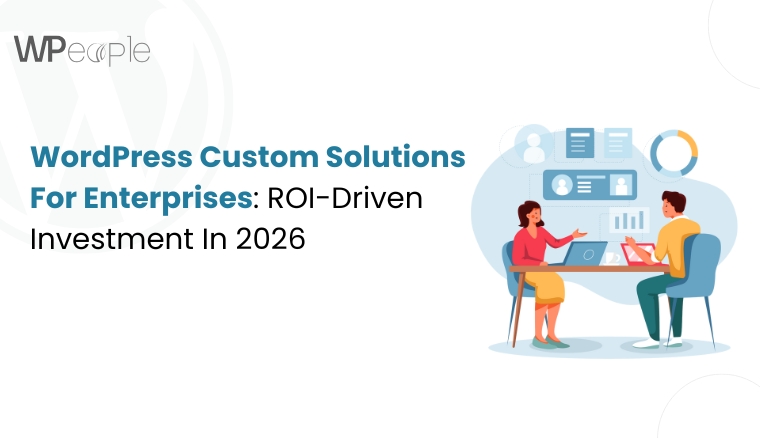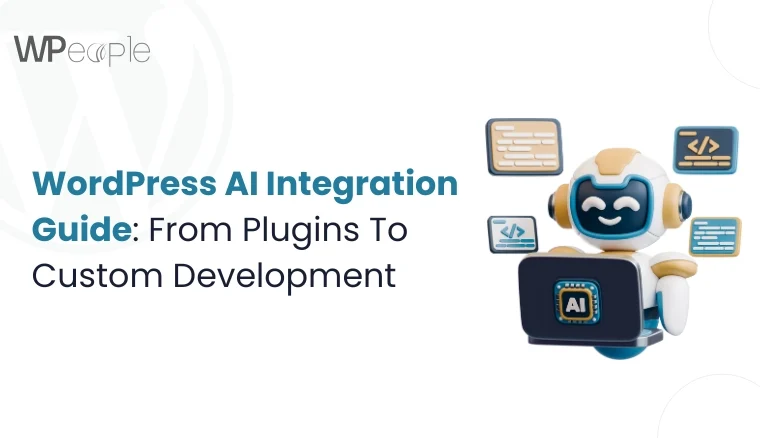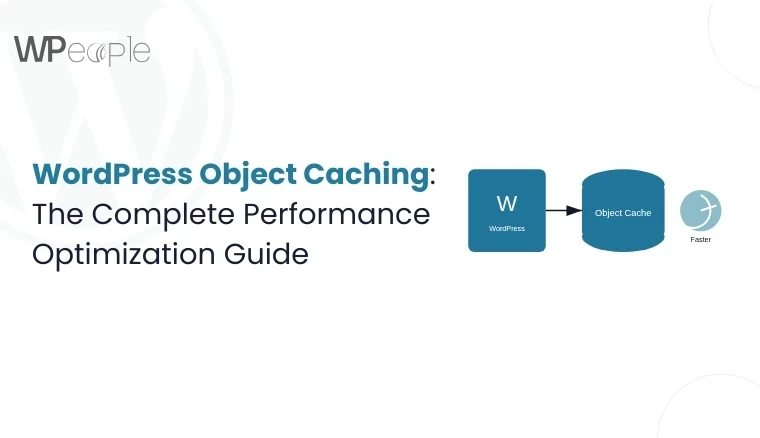
1. Introduction
With the introduction of the Gutenberg editor in WordPress 5.0, the content creation experience was revolutionized. Instead of writing shortcodes or manually embedding HTML, users now create content visually using blocks. But what happens when the default blocks just don’t cut it?
That’s where WordPress custom blocks come in.
Custom blocks allow developers to build unique, reusable, and powerful content components tailored to their specific needs. Whether it’s a custom testimonial block, an interactive pricing table, or a branded call-to-action, building your own blocks gives you unmatched control over your site’s content experience.
In this guide, we’ll explore everything you need to know to build your own WordPress blocks using the WordPress block API and other tools. We’ll walk you through the process step by step—from setup to deployment.
By the end, you’ll be creating WordPress custom blocks like a pro.
2. Prerequisites for Block Development
Before diving in, it’s essential to have a few things in place:
Basic Knowledge of WordPress and Gutenberg
Understanding how the WordPress ecosystem works, including themes and plugins, is crucial. Familiarity with WordPress theme development, the Gutenberg block editor, and its interface will also help as we start building.
Required Tools and Setup
To start developing WordPress custom blocks, you’ll need a few tools in your toolbox:
- Node.js & npm: These are required to run JavaScript-based build tools.
- A Local WordPress Development Environment: Tools like LocalWP, XAMPP, or MAMP are ideal for setting up a test WordPress site.
- Code Editor: Visual Studio Code is a favorite among developers, but tools like PHPStorm are also robust options.
- Command Line Tool: You’ll be using CLI tools to scaffold and build your blocks.
With these basics covered, you’re ready to start.
3. Choosing the Right Approach for Custom Blocks
When it comes to creating WordPress custom blocks, there isn’t a one-size-fits-all method. The best approach depends on your technical background, the complexity of your project, the level of customization needed, and the amount of time you have.
Broadly, there are three primary approaches to creating custom blocks:
- Using Pre-built Block Plugins
- Manual Coding with JavaScript and PHP
- ACF (Advanced Custom Fields) Blocks
Let’s break each one down with detailed insights to help you choose the right path.
A. Basic Plugins – Using Pre-built Solutions
If you’re looking to add custom-like functionality to your WordPress site without diving into code, pre-built block libraries are a fantastic place to start.
Popular plugins include:
- Kadence Blocks
- Stackable
- GenerateBlocks
- Spectra (formerly Ultimate Addons for Gutenberg)
These plugins provide a suite of ready-to-use blocks that can be styled, configured, and customized directly from the editor UI—no coding required.
✅ Pros:
- Quick to Set Up: Install the plugin, activate it, and you can start using the blocks instantly.
- User-Friendly Interface: These tools are built for non-developers and offer an intuitive user experience.
- Custom Styling Options: Easily change fonts, colors, spacing, borders, and more with visual controls.
- Responsive Controls: Most pre-built solutions offer responsive design settings for mobile and tablet views.
- Time-Saving: Perfect for building landing pages, product showcases, and layouts in minutes.
❌ Cons:
- Limited Flexibility: You’re confined to the options and structures provided by the plugin. Custom logic or layouts may not be possible.
- Vendor Lock-in: Removing the plugin often breaks your content layout, since blocks are tied to that plugin’s ecosystem.
- Bloat Risk: Some block libraries load unnecessary assets, affecting site performance.
👉 Best for:
- Beginners or non-developers
- Freelancers who need to quickly deliver projects
- Content editors who prioritize ease of use over technical depth
B. Manual Coding – Full Control with JavaScript and PHP
This is the developer-centric approach and leverages the WordPress Block API to build blocks from the ground up using JavaScript (specifically React) and PHP. It gives you complete control over the block structure, attributes, styling, and rendering.
Key Tools Used:
- @wordpress/create-block CLI
- React, JSX
- Webpack, Babel
- PHP for server-side rendering (optional)
✅ Pros:
- Full Control Over Functionality: You design everything—from the editing experience in Gutenberg to how it renders on the front end.
- Lightweight and Performant: No plugin bloat. You only load what you need.
- Custom Data Handling: Easily integrate REST APIs, external data, dynamic content, and custom attributes.
- Modular and Scalable: Ideal for large projects, enterprise solutions, or themes where precision is essential.
- Headless-Ready: Clean separation of logic makes it easier to transition to headless WordPress in the future.
❌ Cons:
- Steeper Learning Curve: Requires familiarity with React, modern JavaScript (ESNext), Webpack, and the WordPress Block Editor internals.
- Longer Development Time: You’ll spend more time setting up, debugging, and testing.
- Complex Maintenance: As the WordPress block editor evolves, so must your code—staying updated is essential.
👉 Best for:
- Developers who want total control
- Agencies building bespoke blocks for clients
- Performance-conscious sites needing lean, optimized code
- Projects with highly specific or interactive block requirements
C. ACF Blocks – A Powerful Low-Code Approach with ACF PRO
Advanced Custom Fields (ACF) has long been a go-to tool in the WordPress developer’s toolkit. With ACF PRO (paid version), you can register custom blocks using PHP and the familiar ACF interface, bypassing the need to write JavaScript-heavy block editor code.
This method lets you create dynamic, custom content blocks with all the flexibility of ACF field groups—dropdowns, image pickers, repeaters, and more.
✅ Pros:
- Low-Code, PHP-Based: If you’re more comfortable with PHP than JavaScript, this is the easiest way to build advanced blocks.
- Rapid Prototyping: Create fully functional custom blocks in minutes by defining fields and templates.
- Excellent for Complex Data: Nested repeaters, flexible content fields, and post object selectors make it ideal for advanced structures.
- Easy Integration with Themes: Uses native WordPress templating, making it seamless to include in custom themes.
❌ Cons:
- Requires ACF PRO License: It’s not free, and you’ll need a paid subscription to use block features.
- Limited JavaScript Control: Although powerful, you won’t get the same level of interactivity or React component customization.
- Performance Considerations: With complex ACF fields, rendering can be heavier if not optimized.
👉 Best for:
- PHP developers looking to avoid React
- Quick development of custom blocks with structured data
- Teams already using ACF in their workflow
- Theme developers creating bundled block experiences
So, Which Approach Is Right for You?
| Criteria | Pre-Built Plugins | Manual Coding | ACF Blocks |
| Ease of Use | ⭐⭐⭐⭐ | ⭐ | ⭐⭐⭐ |
| Customization | ⭐⭐ | ⭐⭐⭐⭐ | ⭐⭐⭐ |
| Performance | ⭐⭐ | ⭐⭐⭐⭐ | ⭐⭐ |
| Development Time | ⭐⭐⭐⭐ | ⭐ | ⭐⭐⭐ |
| Learning Curve | ⭐ | ⭐⭐⭐⭐ | ⭐⭐ |
| Best for | Beginners & Speed | Advanced Devs | PHP Devs & ACF Users |
4. Setting Up the Block Development Environment
Let’s dive into setting up your block development workspace.
Installing and Configuring a Block Plugin
Start by installing a basic plugin structure. You can create a new folder inside your WordPress wp-content/plugins/ directory and add a plugin header to a new PHP file:
Scaffolding a Block with @wordpress/create-block
WordPress offers a handy CLI tool to generate block code:
This will generate a working plugin complete with a block scaffold.
Reviewing the File Structure
You’ll see files like:
- block.json – metadata and configuration
- index.js – entry point for registering the block
- edit.js – code for how the block looks in the editor
- save.js – defines how the block is saved (or rendered on the front end)
- render.php – for dynamic server-side rendering (optional)
5. Creating Your First Custom WordPress Block
Step 1: Setting Up the Block
Open the block.json file to define your block:
Clean up the default code and remove unneeded files like style.scss if you don’t need custom styles yet.
Step 2: Enhancing the Block with Custom Features
Adding Block Supports
To enable block options like alignment or color, use the supports property in block.json:
Adding Attributes to Store Dynamic Data
Attributes store user input and are central to dynamic content:
Implementing RichText for Editable Content
In edit.js, use the RichText component for a content area:
Adding Controls in the Inspector Panel
For additional customization, add sidebar controls:
Step 3: Rendering the Block Content
There are two ways to render block content:
Using save.js for Static Rendering
If your block doesn’t change based on backend logic, define the front-end output here:
Using render.php for Dynamic Blocks
Dynamic blocks output HTML via PHP:
php
Register this in your PHP plugin file:
6. Advanced Block Development Techniques
Ready to level up your block skills?
Handling Dynamic Content with API Requests
Use useEffect and wp.apiFetch to pull data:
Implementing Nested Blocks with InnerBlocks
Allow blocks within blocks:
To save nested content:
Adding Media Uploads
Use MediaUpload for images or video:
7. Debugging and Testing Your Custom Block
Common Errors and Fixes
- Missing block registration: Check block.json path and namespace.
- Incorrect attribute type: Ensure types match expected formats.
- JavaScript not compiling: Use npm start to watch for errors.
Tools for Debugging
- React Developer Tools
- WordPress Debug Mode
- Browser DevTools Console
Plugins That Help
- Query Monitor – for debugging PHP and database queries.
- Gutenberg Plugin – always test against the latest block editor updates.
8. Optimizing and Deploying Your Block
Performance Optimization Strategies
- Use lazy loading for scripts
- Minimize and bundle JavaScript and CSS
- Avoid excessive API requests
Writing Documentation
Clearly document:
- Block name and description
- Attributes and options
- Shortcode or reusable block info
This makes it easier for others to use (or for future-you).
Submitting Your Block to the WordPress Plugin Repository
- Zip your plugin
- Submit to WordPress.org Plugin Submission
- Follow their guidelines for naming, licensing, and security
9. Conclusion
Creating WordPress custom blocks unlocks a whole new level of control and creativity in the Gutenberg editor. With tools like the WordPress block API, @wordpress/create-block, and custom React components, you can craft tailored content blocks that elevate your website’s user experience.
Whether you’re building a simple testimonial slider or a full-featured pricing table, custom blocks give you the power to transform your WordPress site beyond the limitations of themes and plugins.
Now that you’ve mastered the step-by-step process, it’s time to start building. Embrace the block, and create something amazing.
Consult with Our WordPress Experts On:
- WooCommerce Store
- Plugin Development
- Support & maintenance




